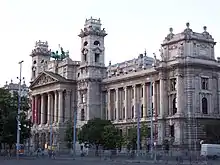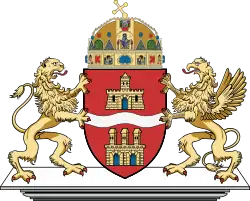Ethnographic Museum (Budapest)
History
It was founded as the Ethnographic Department of the Hungarian National Museum in 1872. Its first director was John Xantus de Vesey. It formally split from the National Museum in 1947 but moved to its building in Kossuth Square, opposite the Parliament building, only in 1973. The grand building in which the Museum of Ethnography is now housed was originally built by Alajos Hauszmann for the Ministry of Justice.
Collection
The museum houses a collection of Hungarian folk objects from the 19th century. The collection includes pieces from everyday Hungarian life from before World War II, including pottery, costumes, boats, and furniture. Many of the objects are from Upper Hungary and Transylvania.[1]
Also featured in the museum are scenes from everyday Hungarian life around 1900. These include a model of a kitchen and a model of a church.[2]
References
- Hewitt, Rick Steves & Cameron (2009). Rick Steves' Budapest (1st ed.). Berkeley, Calif.: Avalon Travel. ISBN 9781598802177.
- Kaufman, Rachelle. ""Kaufman Green Guide Budapest". Kaufman Green Guides, 2015

